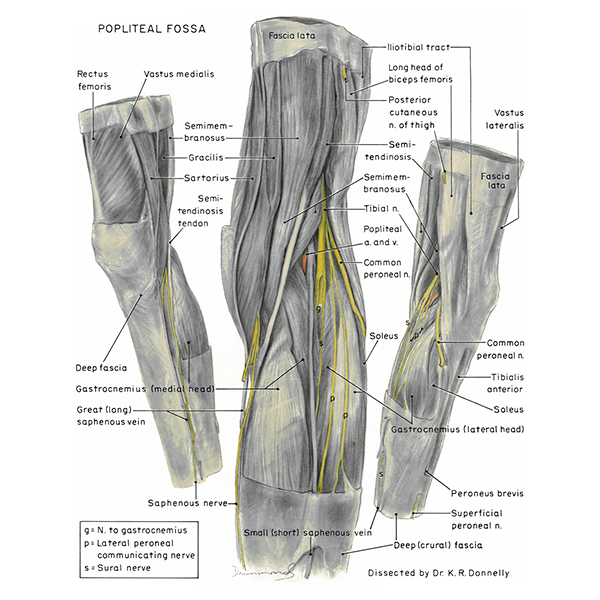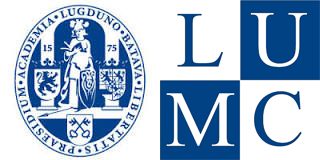
nid: 60392
Additional formats:
None available
Description:
Superficial anatomy of the popliteal fossa. The structures of the popliteal fossa can be seen. Also the adjacent muscles are shown. English labels.
Retrieved from website Clinical Anatomy of the University of British Columbia.
Retrieved from website Clinical Anatomy of the University of British Columbia.
Anatomical structures in item:
Uploaded by: rva
Netherlands, Leiden – Leiden University Medical Center, Leiden University
Membrum inferius
Fossa poplitea
Musculus rectus femoris
Musculus vastus medialis
Musculus sartorius
Musculus gracilis
Musculus semimembranosus
Fascia cruris
Musculus gastrocnemius
Vena saphena magna
Nervus saphenus
Vena saphena parva
Nervus fibularis communis
Musculus soleus
Musculus vastus lateralis
Musculus semitendinosus
Nervus suralis
Arteria poplitea
Vena poplitea
Nervus tibialis
Creator(s)/credit: Department of Anatomy, University of British Columbia, UBC; Dr. K.R. Donnelly, UBC
Requirements for usage
You are free to use this item if you follow the requirements of the license:  View license
View license
 View license
View license If you use this item you should credit it as follows:
- For usage in print - copy and paste the line below:
- For digital usage (e.g. in PowerPoint, Impress, Word, Writer) - copy and paste the line below (optionally add the license icon):
"U.Br.Columbia - Drawing Superficial anatomy of the popliteal fossa - English labels" at AnatomyTOOL.org by Department of Anatomy, University of British Columbia, UBC and K.R. Donnelly, UBC, license: Creative Commons Attribution-NonCommercial-ShareAlike. Created for: Department of Anatomy (now Department of Cellular and Physiological Sciences) at the University of British Columbia. Source: website Clinical Anatomy, http://www.clinicalanatomy.ca
"U.Br.Columbia - Drawing Superficial anatomy of the popliteal fossa - English labels" by Department of Anatomy, University of British Columbia, UBC and K.R. Donnelly, UBC, license: CC BY-NC-SA. Created for: Department of Anatomy (now Department of Cellular and Physiological Sciences) at the University of British Columbia. Source: website Clinical Anatomy, http://www.clinicalanatomy.ca




Comments